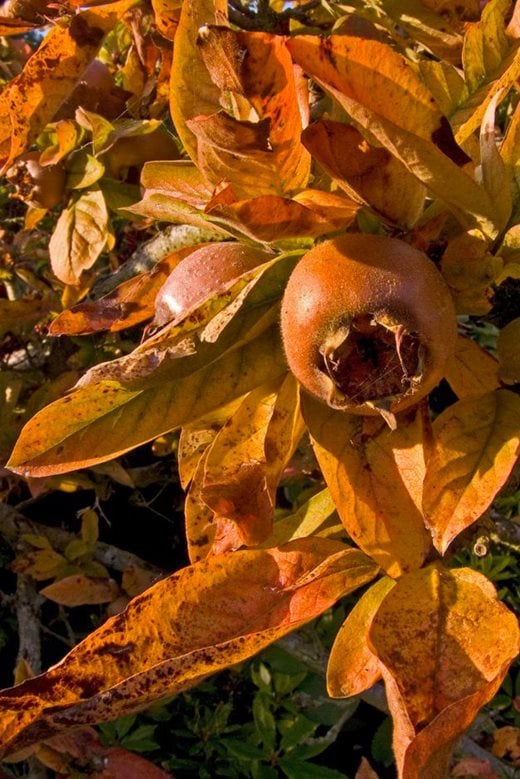 Botanical name: Mespilus germanica
Types:
Botanical name: Mespilus germanica
Types: Popular varieties include ‘Nottingham’ an upright tree with small, flavoursome fruit, and ‘Dutch’ which has a spreading habit and large fruit
Just a few centuries ago, the medlar was a well-known fruit tree that was commonly grown in Britain. Before the arrival of sugar, the fruit were considered a popular wintertime sweet treat, but they’ve fallen out of favour in recent centuries, perhaps owing to their ‘rotten’ appearance and their erstwhile nickname of ‘open-arse’ fruit. (We can thank Chaucer for that.)
Medlars may have been cultivated up to 3,000 years ago in parts of south-west Asia and southeastern Europe. The Greek naturalist and philosopher Theophrastus wrote about them in 300BC, and it is thought that they were introduced to Britain during the Roman period.
Like quinces and apples, the medlar belongs to the rose family, and they are an excellent fruit tree to grow, particularly in smaller gardens. Reaching 4-6 metres in height and with a spread of about 6 metres, they are attractive ornamentals with pretty blossom, stunning autumn colour and unusual fruit. They’re not fussy either; they can tolerate most soils, aren’t sensitive to pests and diseases, and don’t require much pruning.
A good blet
The fruits should be picked from late October to November, ideally after a hard frost, and stored somewhere cool for a few weeks to allow them to blet. This is a softening process in which the fruit’s starches are converted into sugars, and the acids and tannins decrease. The bletting process is essential to transform the hard and bitter medlar into a soft, sweet fruit. Although they look like they have spoiled, which goes some way to explaining why you probably won’t find ripe medlars on supermarket shelves, they are delicious if you’re willing to try them. Their flesh tastes of apple puree with undertones of citrus, date and apricot. They can be eaten raw, but are more commonly turned into medlar jelly or medlar cheese.
Health benefits
Rich in immunity-boosting vitamin C, it is of little surprise that medlars were popular to eat during medieval winters, when there was little other fresh fruit available. The fruit, leaves and bark of the tree were also used in medicines for stomach complaints, and even today, medlar jelly is eaten alongside rich meats and thought to aid digestion.
Aside from their health benefits, the French thought medlar trees had magical powers which could protect their homes from witchcraft and sorcery. They nick-named the fruit ‘
cul de chien’, which describes the back end of a dog and alludes to the fruit’s unusual appearance. The British invented similarly crude names for the fruit, which feature in the works of both Chaucer and Shakespeare. Medlars appear figuratively in literature throughout the ages, usually denoting decay and destitution, because of their rotten appearance.
Steeped in history, easy to grow, and with stunning foliage, medlars are superb trees to grow, offering you a supply of vitamin-rich fruit to see you through the winter months.

